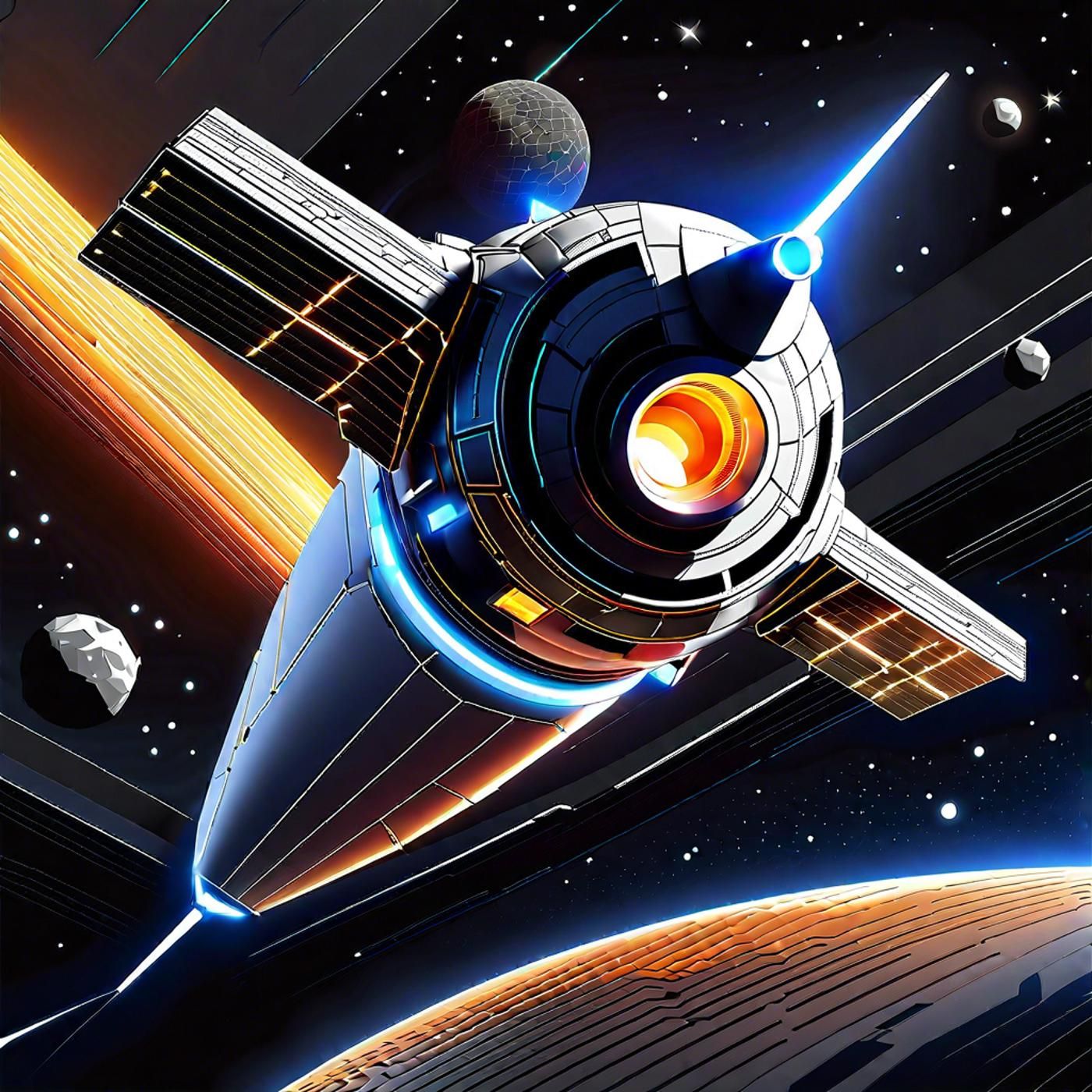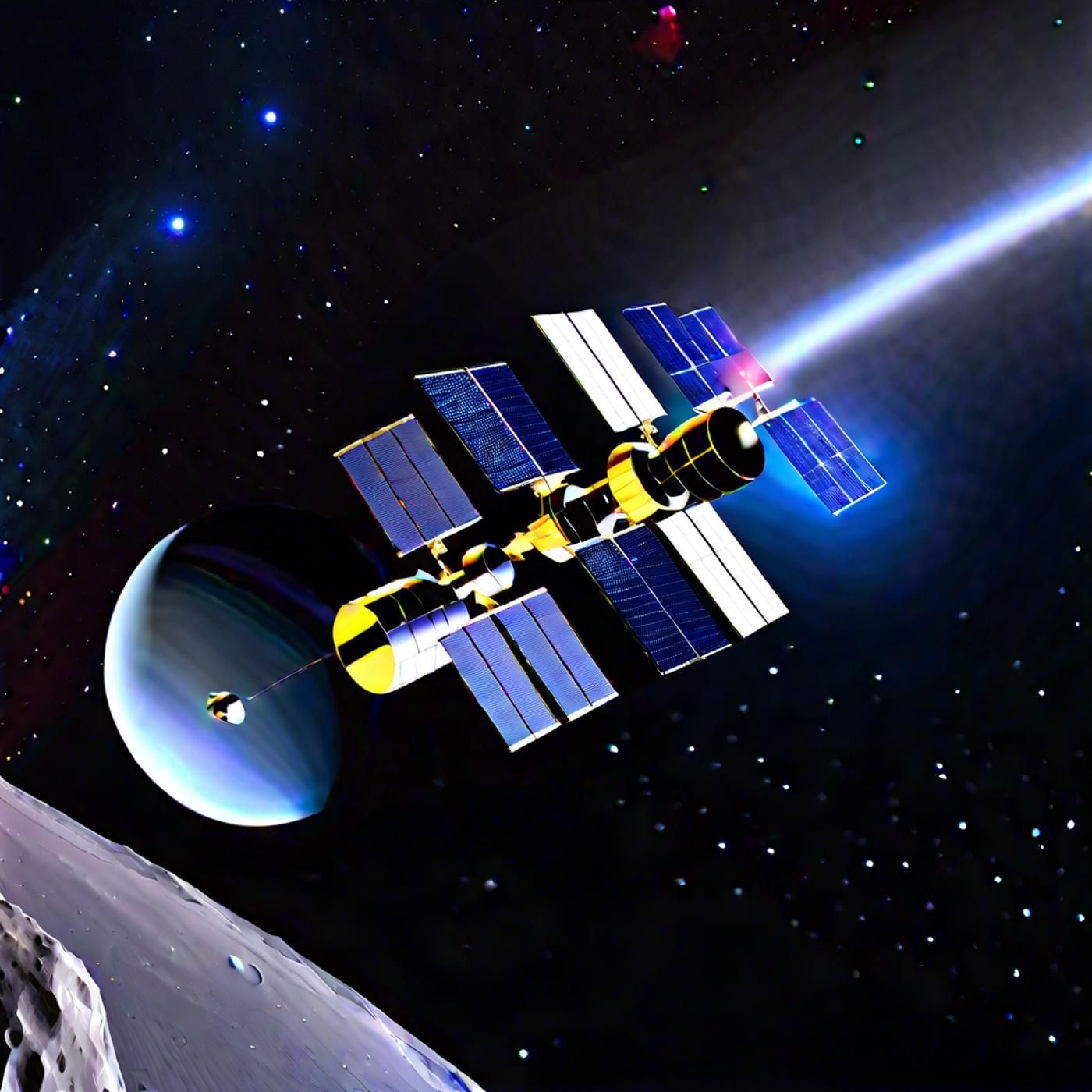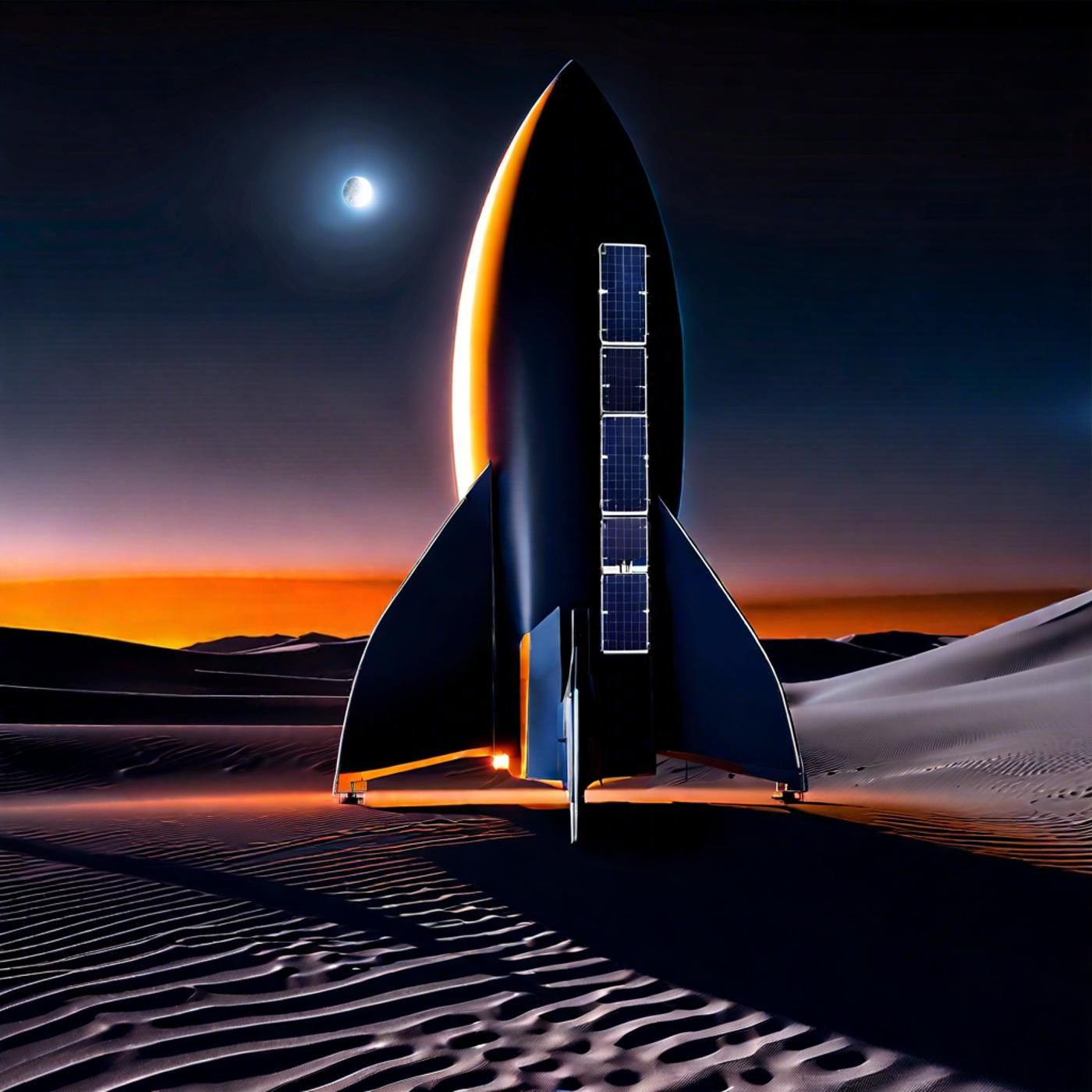S03E63: South Korea's Mars Ambition & Agnikul's Ascent: KASA's Vision and India's Rocket Milestone

Embark on a celestial journey with today's episode of Astronomy Daily - The Podcast, where your host, Anna, guides you through the latest cosmic updates. We'll start with South Korea's ambitious plans to land on Mars by 2045 and the launch of their...
Embark on a celestial journey with today's episode of Astronomy Daily - The Podcast, where your host, Anna, guides you through the latest cosmic updates. We'll start with South Korea's ambitious plans to land on Mars by 2045 and the launch of their first space agency, CASA. Then we'll delve into India's latest achievement in space technology as Agnikul Cosmos successfully launches the country's second privately built rocket. But that's not all. We'll also bring you some significant updates from the Japanese space agency JAXA concerning their Akatsuki Venus probe, as well as a groundbreaking mission by China's Chang'e-6 to the far side of the moon. And to cap it all off, we'll explore a recent discovery by the James Webb Space Telescope that has identified the most distant known galaxy, along with news about Boeing's Starliner capsule gearing up for its first-ever astronaut mission.
00:00) Astronomy Daily brings you the latest news in astronomy and space exploration
01:04) South Korea has announced ambitious plans to land on Mars by 2045
04:27) JAXA has lost contact with its Akatsuki spacecraft studying Venus climate
07:08) Scientists using the James Webb Space Telescope have identified the most distant known galaxy
For an astronomical experience, visit our website at astronomydaily.io for the latest news, sign up for our free newsletter, and check out exclusive sponsor deals. Connect with us on X (@AstroDailyPod) for engaging discussions with fellow space aficionados. This is Anna, reminding you to keep your gaze fixed on the heavens. Until our next stellar episode, let the cosmos ignite your curiosity and wonder. Clear skies and cosmic discoveries to all!
Support:
https://www.bitesz.com/show/astronomy-daily-the-podcast/support/
www.bitesz.com
Sponsors
www.bitesz.com/nordpass
https://www.bitesz.com/show/astronomy-daily-the-podcast/sponsors/
Astronomy Daily brings you the latest news in astronomy and space exploration
Anna: Welcome to Astronomy Daily, your trusted source for the latest news in astronomy and space exploration. I'm Anna, your host for this episode. Today, we have an exciting lineup of topics for you. We'll start with South Korea's ambitious plans to land on Mars by 2045 and the launch of their first space agency, KASA Then we'll delve into India's latest achievement in space technology as Agnikul Cosmos successfully launches the country's second privately built rocket. But that's not all. We'll also bring you some significant updates from the japanese space agency JAXA concerning their Akatsuki Venus probe, as well as a groundbreaking mission by China's Chang'e 6 to the far side of the moon. And to cap it all off, we'll explore a recent discovery by the James Webb space Telescope that has identified the most distant known galaxy, along with news about Boeing's starliner capsule gearing up for its first ever astronaut mission. So sit back and stay tuned as we dive into these fascinating stories from the cosmos.
South Korea has announced ambitious plans to land on Mars by 2045
Execute audio the astronomy daily podcast South Korea has announced ambitious plans to land on Mars by 2045. This monumental task will be led by the newly launched Korea Aerospace Administration, or KASA President Yoon Suk Yeol at the agency's unveiling outlined a bold vision for South Korea's space economy. With an investment of ₩100 trillion, or approximately $72.6 billion set aside, the country is laying the groundwork to become one of the top five space powers globally. KASA is not just about reaching for the stars, it's about fostering a robust aerospace industry. The agency aims to streamline policies and consolidate the various space exploration efforts, bringing a unified approach under its umbrella. This integrated strategy includes dozens of R and D projects and significant financial backing for innovation. South Korea's space ambitions do not stop at Mars. The nation plans to launch its first lunar lander by 2032, and at least three more space missions are projected by 2027, including the launch of military satellites. The recent success of the Nuri rocket, which made South Korea the 7th country to achieve an indigenous space launch vehicle and satellite development, further underscores their capabilities and determination in a broader context. South Korea's initiatives are a part of an expanding asian space presence. Nations in the region, including China, Japan, and India, have also embarked on significant space exploration projects, underscoring Asia's growing role in the global space race. India's space startup Agnikul Cosmos, has reached a major milestone with the successful launch of its Agnibaan rocket. This marks the country's second privately built rocket and what makes this achievement particularly notable is that it tested the first indian semicirgenic engine using both gas and liquid fuel. This technology showcases a significant advancement in India's capabilities in private space exploration. The journey to this launch was not without its challenges. The Agnibaan's first flight attempt experienced delays due to technical issues, with the most recent cancellation occurring just 5 seconds before liftoff. However, on Thursday, persistence paid off as the customizable two stage launch vehicle achieved a vertical ascent to a maximum altitude of approximately 8076 m meters before its ocean splashdown. All mission objectives were met and the performance was described as nominal, showcasing the reliability and robustness of Agnikul's innovative semicriogenic engine, which was also the first to be realized through additive manufacturing. This success has bolstered confidence in India's private space sector, reflecting Prime Minister Narendra Modi's ongoing push for privatization and commercialization in space activities. The significance of this mission was underscored by Pawan K. Ganka, chairman of the space regulator inspace, who hailed it as a historic moment. It reflects India's growing capabilities in the sector and positions Agnikul Cosmos as a pioneering force within the private space industry. Indeed, this mission marks an important step forward, signifying India's readiness to compete on a global scale in space technology and exploration.
JAXA has lost contact with its Akatsuki spacecraft studying Venus climate
The japanese space agency JAXA has recently lost contact with its Akatsuki spacecraft, which has been dedicated to studying the climate of Venus since 2015. This mission, originally launched in 2010, faced early hurdles, having failed to enter Venus's orbit during its initial attempt. However, it remarkably succeeded on a second try after five years, thanks to the ingenuity and persistence of JAXA engineers. Despite the recent communication setback, Akatsuki, uh has exceeded its primary mission goals and contributed significantly to our understanding of venusian atmospheric dynamics. Its observations have provided unexpected insights, enriching our knowledge about Earth's neighboring planet. Currently, JAX's Institute of Space and Astronautical Science, ISAS, is making concerted efforts to restore communication with the spacecraft. Even if these efforts do not succeed, Akatsuki's mission stands as a testament to the problem solving prowess of JAXA's engineers and the valuable data they have gathered on Venus's climate. China is making waves in lunar exploration with its Chang'e 6 mission poised to land on the far side of the moon and return with precious lunar samples. Scheduled for a landing on June 1, the mission marks another ambitious step in China's expanding space program. The Chang'e 6 spacecraft, which launched aboard a long March 5 rocket on May 3, aims to collect about 2 material from a region that remains largely unexplored due to its permanent position facing away from Earth. This presents significant challenges for direct communication, but China plans to overcome this with the use of its Quekshao two relay satellite, which will facilitate communication between Earth and the spacecraft. The lander is targeting the Apollo crater in the moon's southern hemisphere, a site that could provide insights into the water ice trapped in the region and help explain the origins of the larger south pole Aitken impact basin. Equipped with a robotic scoop and drill, the lander will dig around 2 meters into the lunar surface to extract samples. Once the samples are collected, they will be ascended from the lander to meet with the orbiting module. A, uh, return capsule will then carry the lunar material back to Earth with an expected arrival date of June 25, landing in Inner Mongolia. The mission's success could significantly enhance our understanding of the moon's composition and geological history, while also laying the groundwork for future crewed missions. With Chang'e 6 China continues to demonstrate its growing capabilities and ambitions in space exploration.
Scientists using the James Webb Space Telescope have identified the most distant known galaxy
In an extraordinary discovery, scientists using the James Webb Space Telescope have identified the most distant known galaxy, a hitherto unseen landmark in the vast expanse of the cosmos. This galaxy, observed a mere 290 million years after the Big Bang, offers an unparalleled glimpse into the early universe. The team of international astronomers focused their efforts during the JWST Advance Deep extragalactic survey, employing Webb's Nier spec, or near infrared spectrograph, to achieve this record breaking finding. Situated at a redshift of approximately 14, the galaxy, named Jades GSz 140, signals a ah period less than 300 million years post creation of the universe. This timeframe, referred to by astronomers as cosmic dawn, marks the era where the universe's first galaxies were formed. By studying these nascent galaxies, scientists hope to unlock the mysteries of how gas, stars, and black holes interacted and evolved at the birth of the universe. Webb's Nircam, or near infrared camera, played a crucial role by capturing intricate images of these ancient cosmic structures, guiding researchers to pinpoint which galaxies merited further scrutiny with spectroscopic analysis, this monumental discovery not only sets a new benchmark, but deepens our understanding of the universe's infancy and the complex processes that shape the cosmos as we know it today. Boeing's Starliner capsule is finally ready for its first crewed mission, marking a significant milestone after a series of technical delays alongside its rocket counterpart, the United Launch Alliance, Atlas V Starliner rolled out to the launch pad at Florida's Cape Canaveral Space Force station on May 30. The imminent launch, scheduled for June 1 at 12:25 p.m. EDT, will kick off the crew flight test. Starliner's first mission carrying astronauts. This mission, named CFT will send NASA astronauts Butch Wilmore and SUNY Williams to the International Space Station for approximately seven days. Once this test flight is successfully completed, Starliner will be certified for regular 6 month crewed missions to and from the ISS, much like its competitor SpaceX's Crew Dragon. The journey to this point has been fraught with challenges. Earlier launch attempts were aborted, uh, due to technical issues, including a misbehaving valve in the Centaur upper stage and a helium leak detected in Starliner's service module. However, after addressing these issues, a flight readiness review cleared the mission for its scheduled launch date. Boeing's mission represents an important step for NASA's commercial crew program, offering an alternative platform for transporting astronauts to and from the ISS. If successful, it will underscore Boeing's capability to meet NASA's stringent requirements for human spaceflight and establish Starliner as a viable option for crewed missions, complementing the achievements of SpaceX. That's it for today's episode of Astronomy Daily. Remember to visit our website at astronomydaily IO for more articles and updates. While you're there, don't forget to sign up for our free astronomy and Space newsletter to stay informed about the latest developments in the cosmos. And special thanks to our sponsors who help us deliver this content, NordPass, NordVPN, Protonmail, and Amazon. You can find offer details on our website, and finally, make sure to subscribe to our podcast, available wherever you get your podcasts, and follow us on social media. You'll find us on X, formerly known as Twitter and YouTube. This is Anna signing off. Thank you for tuning in, and we'll see you next time on astronomy daily.
New to Astronomy Daily - The Podcast?
Here are some great episodes to start with.




















